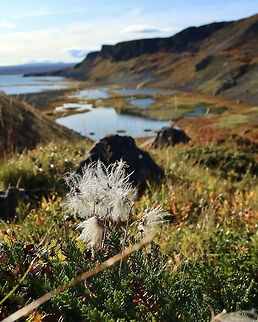
Appearance
The stems are woody, tortuous, with short, horizontal rooting branches. The leaves are glabrous above, densely white-tomentose beneath. The flowers are produced on stalks 3–10 cm long, and have eight creamy white petals - hence the specific epithet ''octopetala''.The style is persistent on the fruit with white feathery hairs, functioning as a wind-dispersal agent. The feathery hairs of the seed head first appear twisted together and glossy before spreading out to an expanded ball which the wind quickly disperses.

Naming
The specific epithet ''octopetala'' derives from the Greek ''octo'' and ''petalon'', referring to the eight petals of the flower, an unusual number in the Rosaceae, where five is the normal number. However, flowers with up to 16 petals also occur naturally.
Distribution
''Dryas octopetala'' has a widespread occurrence throughout mountainous areas where it is generally restricted to limestone outcrops. These include the entire Arctic, as well as the mountains of Scandinavia, Iceland, the Alps, Carpathian Mountains, Balkans, Caucasus and in isolated locations elsewhere. In Great Britain it occurs in the Pennines , at two locations in Snowdonia , and more widely in the Scottish Highlands; in Ireland it occurs on The Burren and a few other sites. In North America it is found in Alaska, most frequently on previously glaciated terrain, and through the Canadian rockies reaching as far south as Colorado in the Rocky Mountains.As a floral emblem, it is the official territorial flower of the Northwest Territories and the national flower of Iceland.

Habitat
It grows in dry localities where snow melts early, on gravel and rocky barrens, forming a distinct heath community on calcareous soils.References:
Some text fragments are auto parsed from Wikipedia.